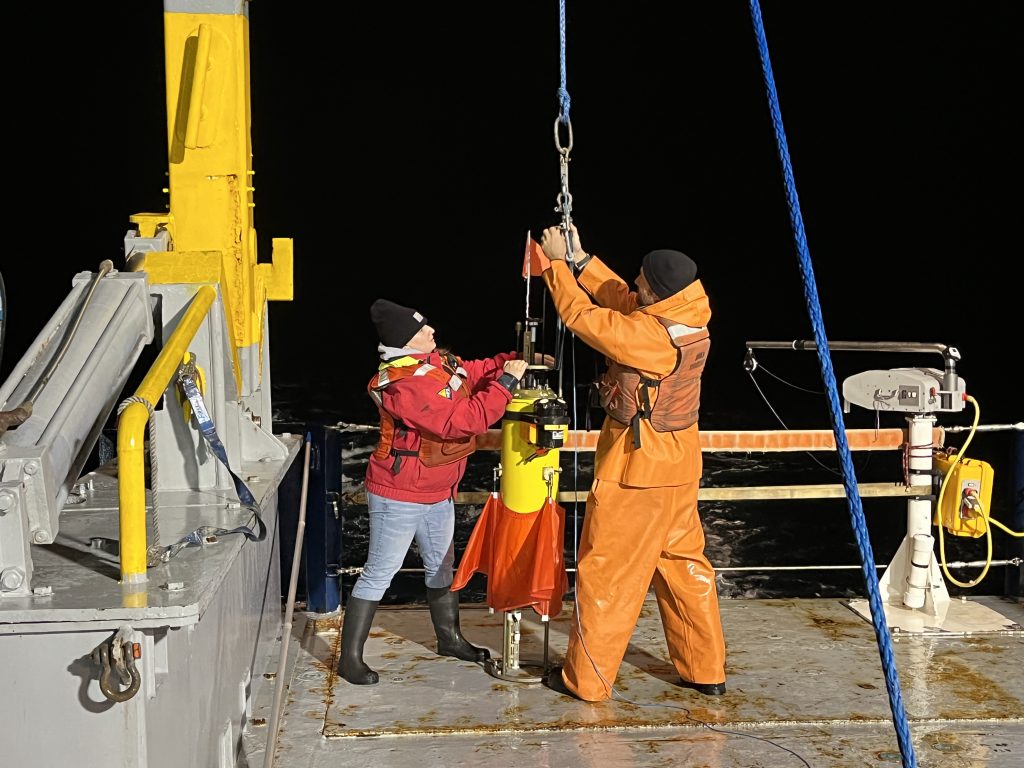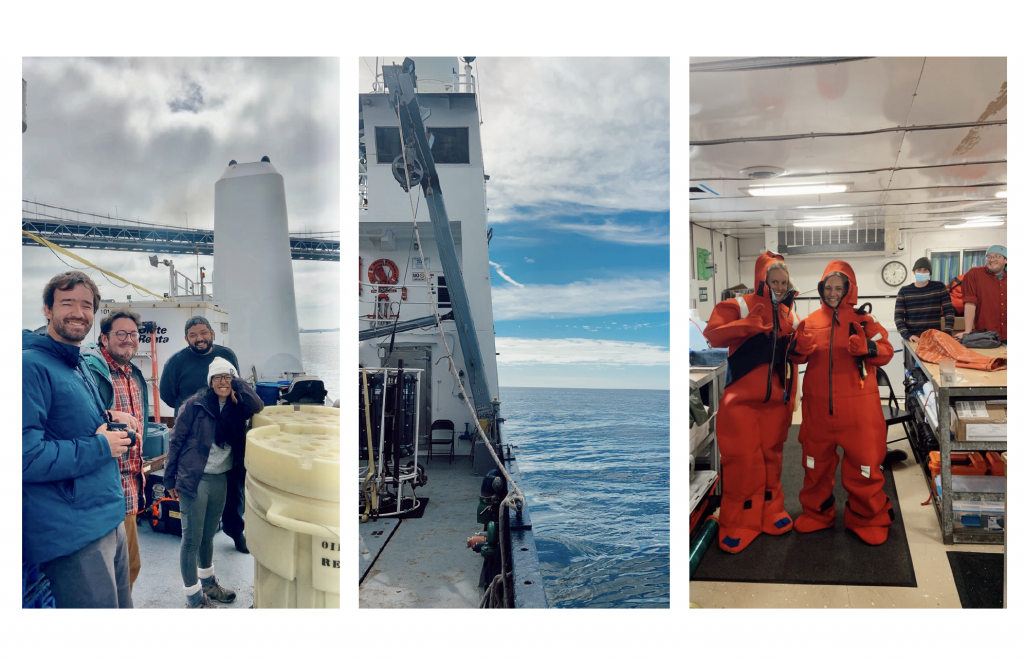By Mackenzie Blanusa, M.S. student at the University of Connecticut // Aboard the Bold Horizon //
I had been patiently waiting and dreaming about this research cruise for months. Yet a few days before traveling from Connecticut to Oregon for ship mobilization, I couldn’t shake a feeling of denial – like I couldn’t believe I was really going to be out in the Pacific Ocean on a research vessel for an entire month.

I am participating in NASA’s Sub-Mesoscale Ocean Dynamics Experiment (S-MODE) as part of the science party aboard the research vessel Bold Horizon. The focus of this experiment is to sample ocean fronts that are a few miles in size to study their dynamics and effects on vertical transport. The ocean fronts are sampled using aircraft, ship surveying, and autonomous platforms with names such as wave gliders, sea gliders, Saildrones, floats, and drifters. So being aboard the ship is just one piece of this complex research experiment.

On the R/V Bold Horizon I have been working the night shift from 4 p.m. to 4a.m. My nights mostly consist of running an instrument called an EcoCTD, which measures temperature, salinity, pressure, chlorophyll, backscatter, and oxygen. The EcoCTD is casted off the back of the ship using an electric winch and travels vertically through the water column to a depth of about 390 feet (120 meters), and is then reeled back in. We usually do this all through the night while driving back and forth across a front. The vertical profiles then get plotted through time and we utilize this data in real time to decide where to deploy autonomous instruments, collect water samples, and keep track of how ocean fronts are evolving.


Additionally, I have been helping with the recovery and deployment of wave gliders and mixed layer floats. Wave gliders are an autonomous surface vehicle that look like a surfboard and are powered by waves and solar energy. They measure variables such as velocity, temperature, salinity, wind speed and direction, air pressure, and radiation. There are eight wave gliders in this experiment, and we had to recover one of them because it had a broken sensor. The mixed layer floats are recovered and deployed every few days and are tasked with floating in the mixed layer to measure vertical velocity.

Aside from all the science, it’s also worth mentioning what life on a research vessel is like. It often feels simpler than the hustle and bustle of everyday life on land – I have a set 12-hour shift doing a very specific task, get meals provided for me, and have limited communication with the rest of the world. Everything feels more clear-cut, and I know what my purpose is. Of course, sea going is also mentally tolling due to the constant rocking back and forth. But we’ve been lucky with mostly good weather, and I haven’t gotten seasick yet.
While S-MODE is certainly a busy experiment with a lot of moving parts, there are moments where it feels like there is nothing to do. This often happens when the weather and sea state is too rough for sampling, so we are forced to find other ways to occupy our time…which can be challenging since you’re in the middle of the ocean with little entertainment. Times like these are met with playing silly games, watching a movie, and learning how to tie different types of knots.
S-MODE is wrapping up in a few days and I’ll be on my way back home. The sense of denial I once felt has been replaced with self-confidence and motivation to pursue a career as a seagoing oceanographer. I have learned so much from all the other scientists on board who are more than happy to share their knowledge with a curious graduate student. Although S-MODE is ending, I know this is just the beginning of my journeys at sea.





